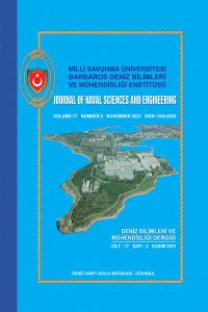MAKİNE VE DERİN ÖĞRENME YÖNTEMLERİ İLE NESNELERİN İNTERNETİ İÇİN SALDIRI TESPİTİNİN KARŞILAŞTIRILMASI
Derin Öğrenme, IoT Güvenliği, Makine Öğrenmesi, Saldırı Tespiti, Siber Güvenlik.
MACHINE AND DEEP LEARNING-BASED INTRUSION DETECTION AND COMPARISON IN INTERNET OF THINGS
Deep Learning, IoT Security, Machine Learning, Intrusion Detection, Cyber Security.,
___
- Referans1 Abiodun, O. I., Jantan, A., Omolara, A. E., Dada, K. V., Mohamed, N. A., & Arshad, H. (2018). State-of-the-art in artificial neural network applications: A survey. Heliyon, 4(11), 1-41. doi:10.1016/j.heliyon.2018.e00938
- Referans2 Albawi, S., Mohammed, T.A., & Al-Zawi, S. (2017). Understanding of a convolutional neural network. In 2017 International Conference on Engineering and Technology (ICET) (pp. 1-6). Turkey, IEEE. doi:10.1109/ICEngTechnol.2017.8308186
- Referans3 Alsamiri, J., & Alsubhi, K. (2019). Internet of Things cyber attacks detection using machine learning. International Journal of Advanced Computer Science and Applications, 10(12), 627-634. doi:10.14569/ijacsa.2019.0101280
- Referans4 Amidi, S., & Amidi, A. (2019). Recurrent Neural Networks Cheatsheet. Stanford Education. Retrieved August 19, 2021, from https://stanford.edu/~shervine/teaching/cs-230/cheatsheet-recurrent-neural-networks#overview
- Referans5 Boateng, E. Y., & Abaye, D. A. (2019). A review of the logistic regression model with emphasis on medical research. Journal of Data Analysis and Information Processing, 7(4), 190-207. doi:10.4236/jdaip.2019.74012
- Referans6 Breiman, L. (2001). Random Forests. Machine Learning, 45(1), 5–32.
- Referans7 Chandrashekar, G., & Sahin, F. (2014). A survey on feature selection methods. Computers & Electrical Engineering, 40(1), 16-28. doi:10.1016/j.compeleceng.2013.11.024
- Referans8 Chomboon, K., Chujai, P., Teerarassamee, P., Kerdprasop, K., & Kerdprasop, N. (2015). An empirical study of distance metrics for k-nearest neighbor algorithm. In Proceedings of the 3rd international conference on industrial application engineering (pp. 280-285). Japan, The Institute of Industrial Applications Engineers. doi:10.12792/iciae2015.051
- Referans9 Gated recurrent unit. (2021, December 29). In Wikipedia. Retrieved June 23, 2021, from https://en.wikipedia.org/wiki/Gated_recurrent_unit
- Referans10 Hochreiter, S., & Schmidhuber, J. (1997). Long short-term memory. Neural Computation, 9(8), 1735-1780. doi:10.1162/neco.1997.9.8.1735
- Referans11 Jonathan, J. (n.d.). What’s a Deep Neural Network? Deep Nets Explained. BMC Software Blogs. Retrieved March 10, 2021, from https://www.bmc.com/blogs/deep-neural-network/
- Referans12 Jozefowicz, R., Zaremba, W., & Sutskever, I. (2015, June). An empirical exploration of recurrent network architectures. In F. R. Bach & D. M. Blei (eds.), International conference on machine learning (pp. 2342-2350). PMLR.
- Referans13 Kasongo, S. M., & Sun, Y. (2020). Performance analysis of intrusion detection systems using a feature selection method on the UNSW-NB15 dataset. Journal of Big Data, 7(1), 1-20. doi:10.1186/s40537-020-00379-6.
- Referans14 Kaviani, P., & Dhotre, S. (2017). Short survey on naive bayes algorithm. International Journal of Advance Engineering and Research Development, 4(11), 607-611.
- Referans15 Khraisat, A., Gondal, I., & Vamplew, P. (2019). Survey of intrusion detection systems: techniques, datasets and challenges. Cybersecurity, 2, 1-20. doi:10.1186/s42400-019-0038-7
- Referans16 Long short-term memory. (2021, June 21). In Wikipedia. Retrieved June 23, 2021, from https://en.wikipedia.org/wiki/Long_short-term_memory#cite_note-lstm1997-1
- Referans17 Manaswi, N. K. (2018). Deep learning with Applications Using Python: Chatbots and Face, Object, and Speech Recognition with Tensorflow and Keras. Apress, Berkeley, CA.
- Referans18 Moustafa, N., & Slay, J. (2015, November). UNSW-NB15: a comprehensive data set for network intrusion detection systems (UNSW-NB15 network data set). In 2015 military communications and information systems conference (MilCIS) (pp. 1-6). Australia, IEEE. doi: 10.1109/MilCIS.2015.7348942
- Referans19 Patel, K. K., & Patel, S. M. (2016). Internet of things-IOT: definition, characteristics, architecture, enabling technologies, application & future challenges. International Journal of Engineering Science and Computing, 6(5), 6122-6131. doi:10.4010/2016.1482
- Referans20 Recurrent neural network. (2021, June 8). In Wikipedia. Retrieved June 23, 2021, from https://en.wikipedia.org/wiki/Recurrent_neural_network Safavian, S. R., & Landgrebe, D. (1991). A survey of decision tree classifier methodology. IEEE Transactions on Systems, Man, and Cybernetics, 21(3), 660-674. doi:10.1109/21.97458
- Referans21 Thakur, D. (2018). LSTM and its Equations. Medium. Retrieved August 19, 2021, from https://medium.com/@divyanshu132/lstm-and-its-equations-5ee9246d04af
- Referans22 Vinayakumar, R., Soman, K. P., & Poornachandran, P. (2017). Evaluation of recurrent neural network and its variants for intrusion detection system (IDS). International Journal of Information System Modeling and Design (IJISMD), 8(3), 43-63. doi:10.4018/IJISMD.2017070103
- ISSN: 1304-2025
- Yayın Aralığı: 2
- Başlangıç: 2003
- Yayıncı: Milli Savunma Üniversitesi Deniz Harp Okulu Dekanlığı
Emre TÜKENMEZ, Emre GÜLHER, Özgür KAYA, H. Fatih POLAT
CPM VE PERT YÖNTEMLERİYLE PROJE PLANLAMA: SAVUNMA SANAYİ ÖRNEĞİ
AKIŞ DÜZENLEYİCİLERİN BİR JENERİK DENİZALTI YELKENİ ETRAFINDAKİ AKIŞA ETKİSİNİN İNCELENMESİ
Gökay SEVGİ, Barış BARLAS, Oral ÜNAL
AN EVALUATION ON WEAPON TARGET ASSIGNMENT PROBLEM
MECHANICAL GYROSCOPE-BASED ROLL MOTION REDUCTION OF MARINE VEHICLES: AN EDUCATIONAL SETUP
A NEW RECEIVER DESIGN FOR SPATIAL MODULATION SYSTEMS
THE EFFECT OF FOV ANGLE ON A RSSI-BASED VISIBLE LIGHT POSITIONING SYSTEM
